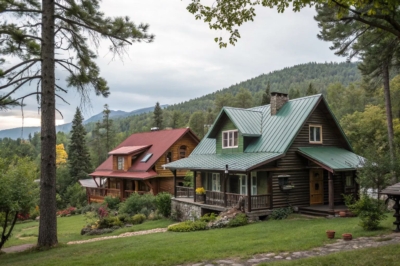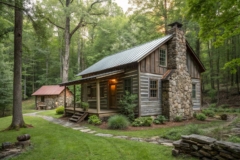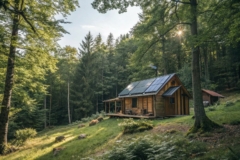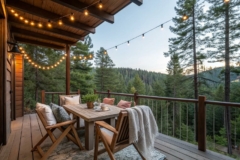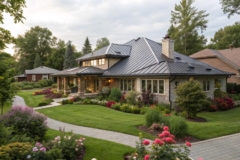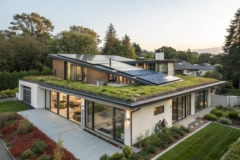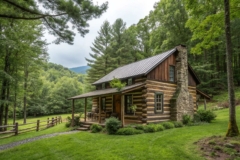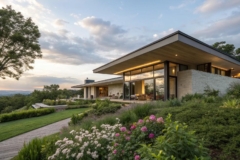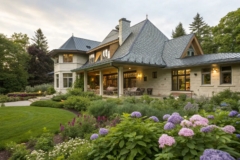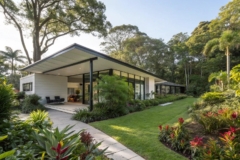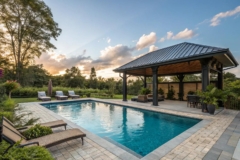1. Elegant Hip Roof
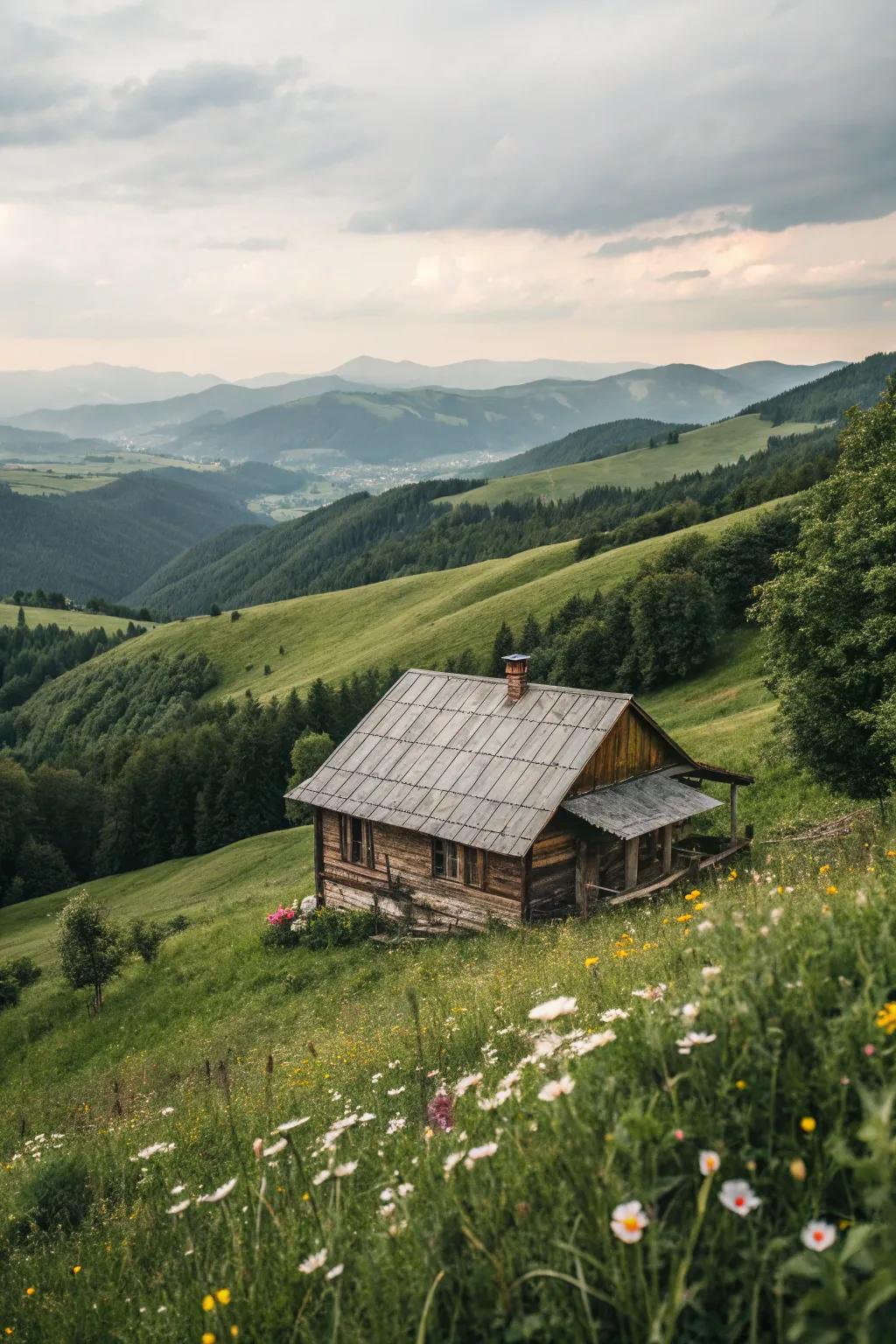
Hip roofs offer a symmetrical aesthetic that’s both pleasing and sturdy, especially in windy areas. I love how they create a gentle silhouette that blends seamlessly with the landscape.
A few suggestions:
- Roofing Underlayment: Enhance roof durability against elements with high-quality underlayment, ensuring long-lasting protection.
- Metal Roofing Panels: Opt for sleek metal panels to support a stylish and weather-resistant hip roof design.
- Roof Ventilation System: Improve air circulation under the hip roof to maintain energy efficiency and roof health.
2. Rustic A-Frame Roof
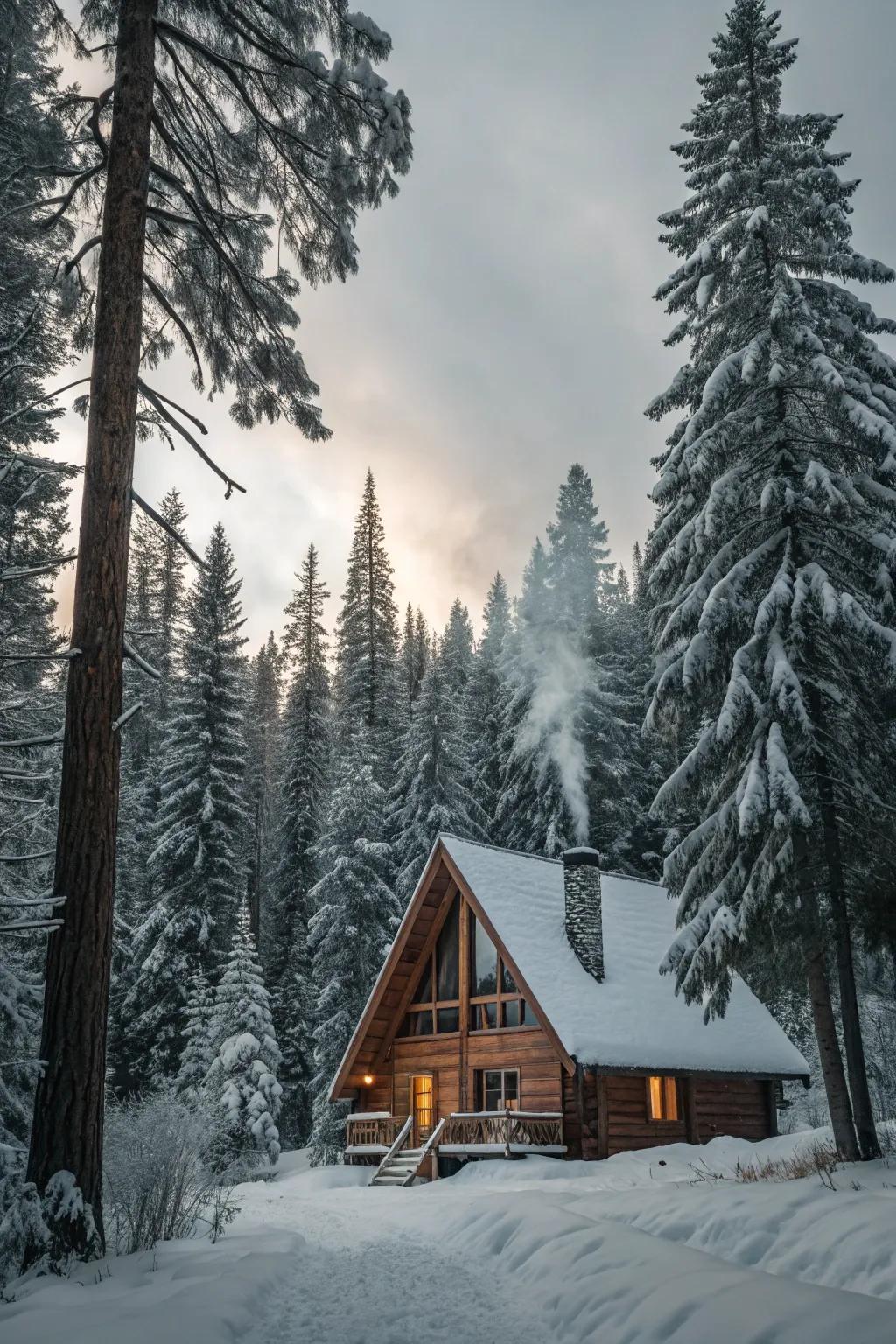
The A-frame roof is perfect if you adore that quintessential cabin look. Its steep angles are practical for heavy snow areas and create a cozy loft space inside—my favorite spot for quiet reading.
Check if these fit your needs:
- Log Cabin Siding: Enhance the rustic charm of your A-frame roof with natural log cabin siding. Order now!
- Wooden Beams: Add sturdy wooden beams for a classic look and improved support. Discover more options online.
- Snow Guards: Protect your roof with snow guards, essential for heavy snow areas. Shop for durable options!
3. Slate Roof for Timeless Elegance
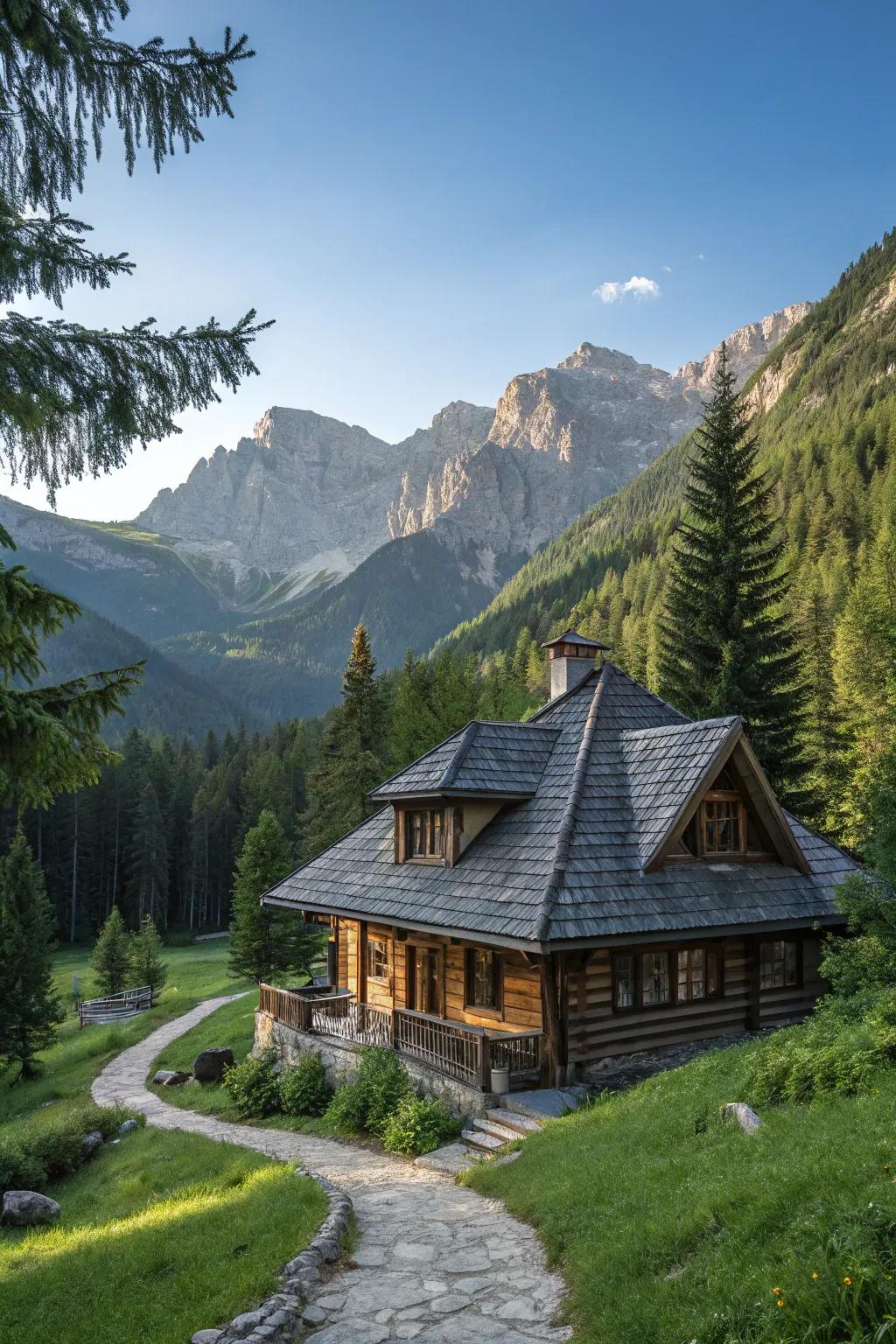
Slate roofs are known for their elegance and longevity. They’re a bit of an investment but worth it for the classic appeal and durability they bring.
Maybe worth checking out:
- Slate Roofing Tiles: Enhance your cabin’s charm with durable slate tiles for a classic, elegant roof.
- Roofing Underlayment for Slate: Protect your slate roof with high-quality underlayment, ensuring longevity and weather resistance.
- Slate Roof Installation Tools: Get essential tools for efficient installation of your elegant slate roof.
4. Modern Shed Roof

For those who love a sleek, minimalist look, the shed roof is a winner. Its single slope not only looks chic but also allows snow to slide right off—a lifesaver in winter!
Useful items to consider:
- Metal Roofing Panels: Choose durable metal roofing panels for a sleek, weather-resistant finish perfect for shed roofs.
- Roof Snow Guards: Prevent snow slides with effective roof snow guards—perfect for maintaining roof safety during winter.
- Roof Underlayment: Ensure extra protection against moisture with reliable roof underlayment beneath your shed roof.
5. Terracotta Tiles for Mediterranean Vibes
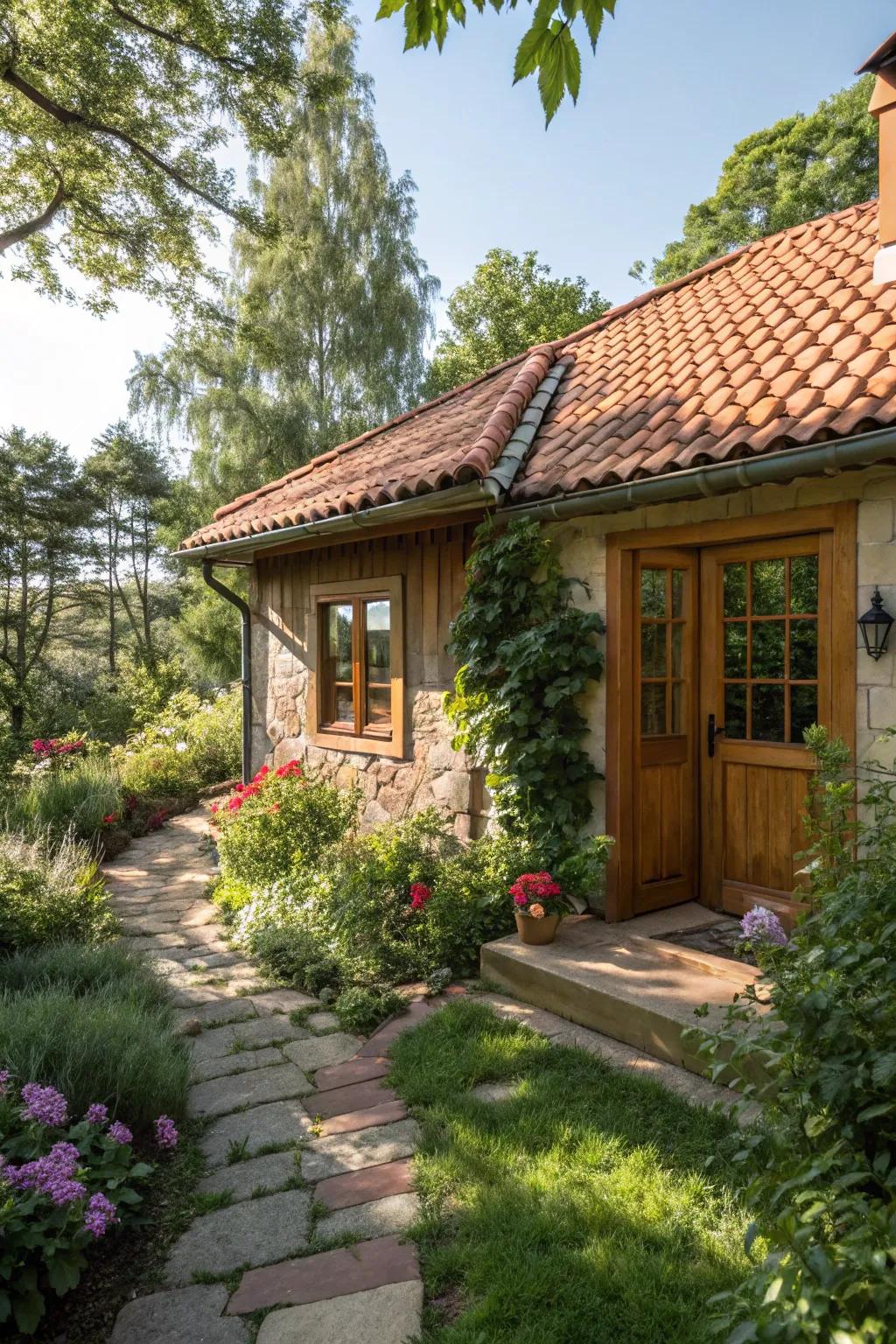
Bring a bit of the Mediterranean to your cabin with terracotta tiles. They’re not only beautiful but also incredibly durable and weather-resistant.
Some handy options:
- Terracotta Roof Tiles: Enhance your cabin’s charm with these durable Mediterranean-style terracotta roof tiles.
- Exterior Tile Sealer: Protect and extend the life of your terracotta tiles with this efficient exterior tile sealer.
- Tile Roofing Underlayment: Ensure your terracotta tiles stay secure with a reliable roofing underlayment.
6. Wood Shakes for a Natural Look

For those who love a natural, rustic aesthetic, wood shakes are a beautiful choice. They provide excellent insulation and blend seamlessly with wooded surroundings.
Consider these options:
- Cedar Wood Shakes: Enhance your cabin’s rustic charm with durable cedar shakes. Transform your roof naturally.
- Wood Shake Stain: Protect and beautify your wood shakes with a stain that enhances grain and resists weathering.
- Wood Shake Roofing Nails: Secure your roof effectively with nails designed for wood shake roofing. Ensure long-lasting stability.
7. Reclaimed Wood Roof for Sustainability

Using reclaimed wood for your roof adds character and promotes sustainability. It’s a perfect choice for those wanting to reduce their environmental footprint while enjoying a vintage look.
Items that may come in handy:
- Reclaimed Wood Roofing Shingles: Upgrade your cabin roof with eco-friendly shingles, adding a rustic and sustainable charm.
- Weatherproof Wood Sealant: Protect your reclaimed wood roof with durable sealant for long-lasting weather resistance.
- Eco-friendly Roof Insulation: Enhance energy efficiency with sustainable insulation while keeping your cabin cozy and eco-friendly.
8. Classic Gable Roof
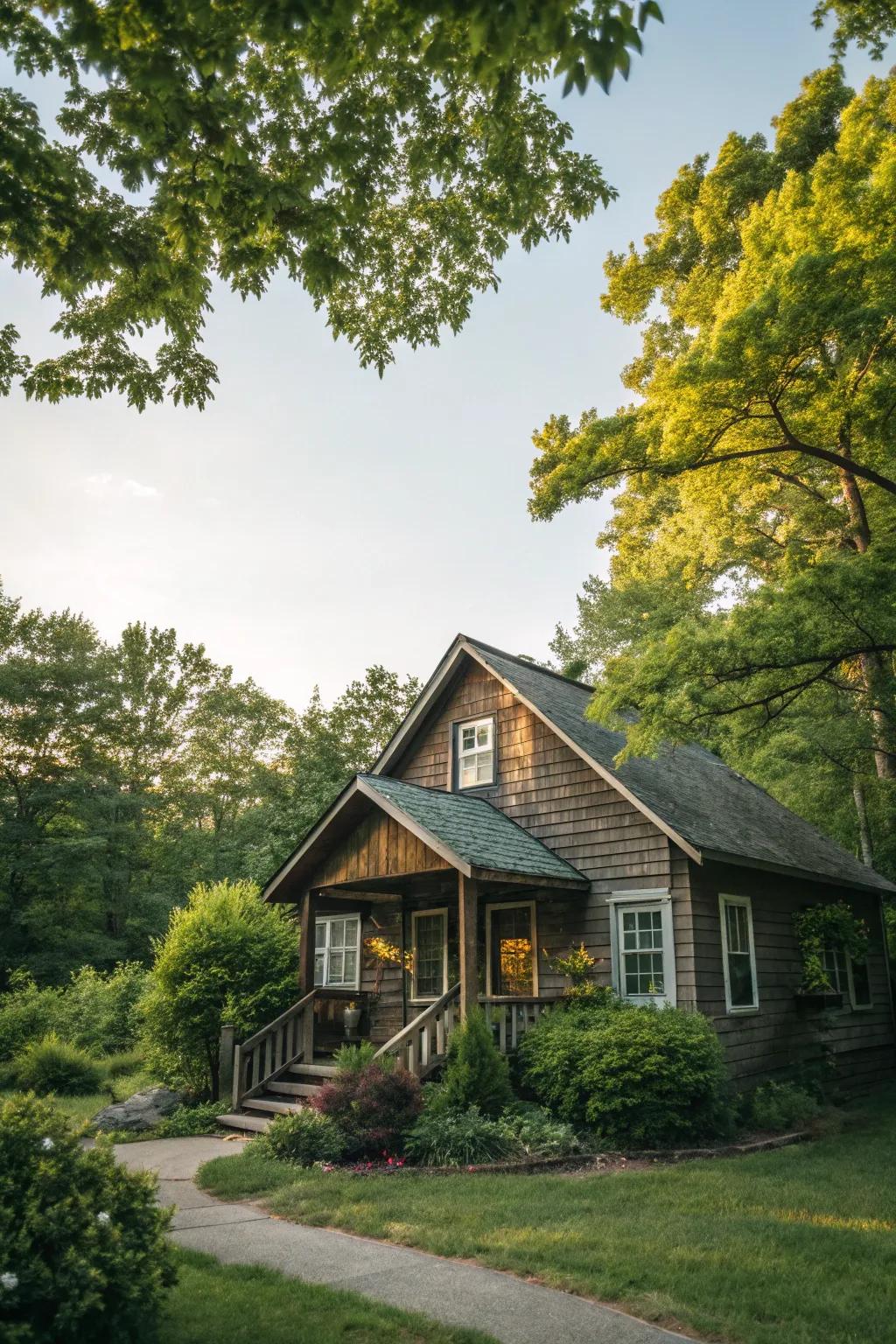
With its triangular shape, the gable roof is a timeless choice that handles snow and rain like a pro. I’ve always admired how this style adds a touch of classic elegance to any cabin.
A few choices to try:
- Roofing Shingles: Enhance your gable roof’s durability with high-quality shingles. Ensure reliable protection against weathering.
- Gutter System: Protect your cabin’s foundation with a dependable gutter system. Efficiently manage rainwater flow.
- Roof Ventilation System: Install a roof ventilation system to prevent moisture buildup and extend roof lifespan.
9. Barn Roof for Extra Space
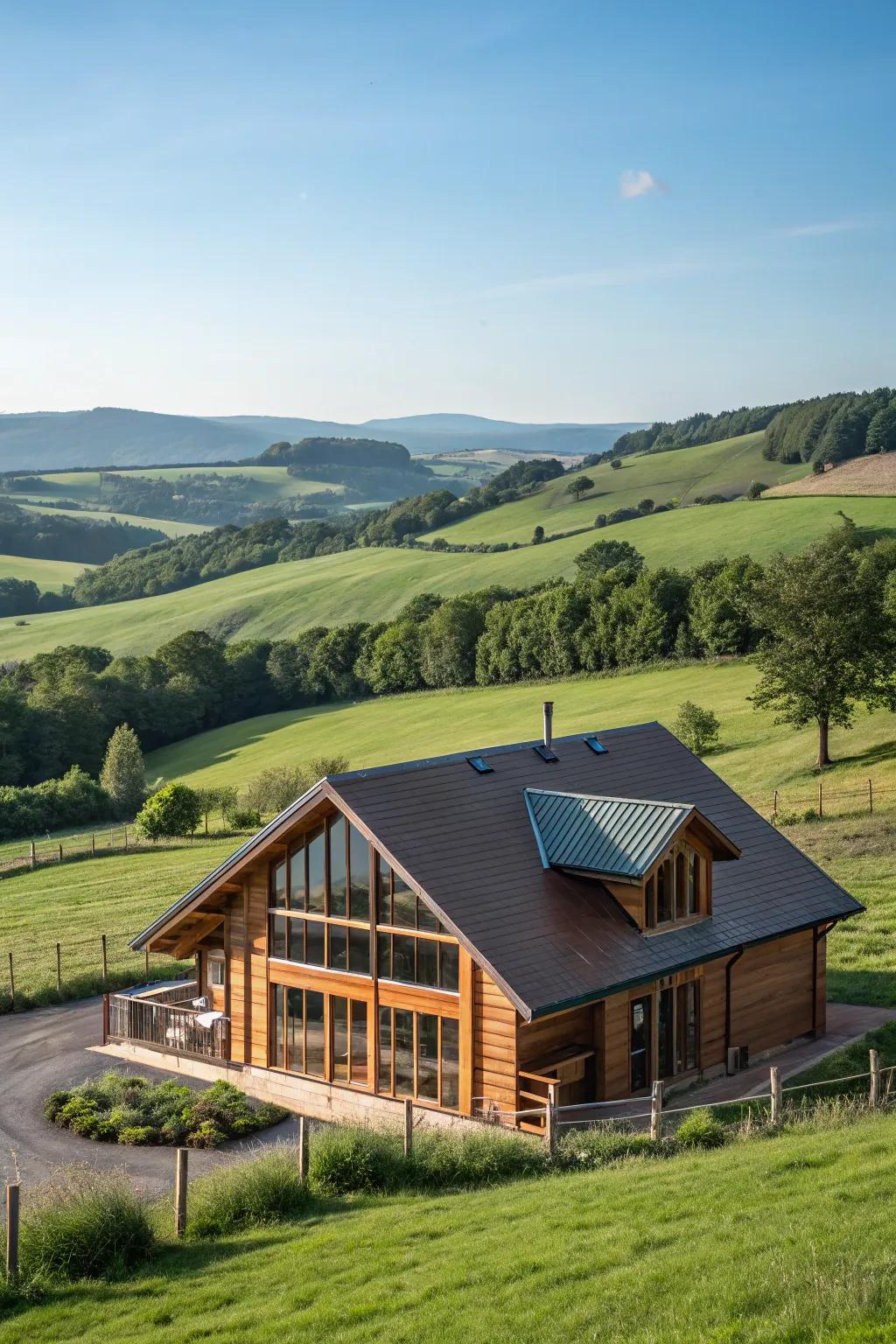
Opt for a barn-style roof for its extra space and rustic appeal. It gives your cabin a touch of countryside charm and plenty of room for storage or a loft.
Possibly handy products:
- Rustic Barn Style Lighting Fixture: Illuminate your loft with charm using this rustic lighting fixture, enhancing the cozy ambiance.
- Wooden Loft Ladder: Access your additional storage easily with this sturdy wooden ladder, blending seamlessly with your décor.
- Heavy-Duty Storage Bins: Maximize your barn roof space with these durable storage bins, perfect for organizing essentials.
10. Synthetic Roofing for Versatility
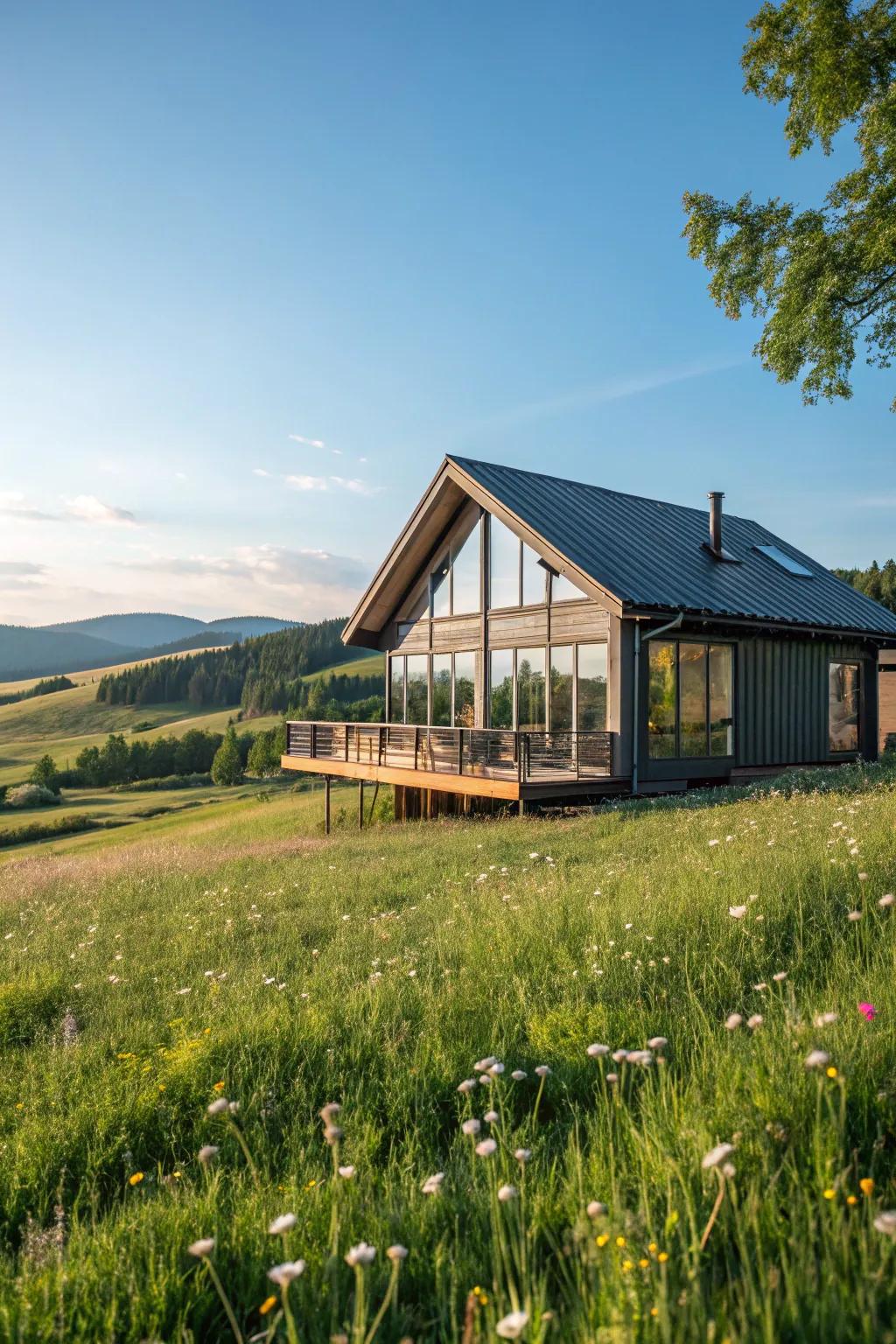
Synthetic roofing materials mimic traditional options like slate or wood but with enhanced durability. They’re a great choice for those looking for low maintenance and high style.
A few relevant products:
- Synthetic Slate Roof Tiles: Upgrade to synthetic slate for a durable, stylish roof that mimics classic elegance effortlessly.
- Composite Wood Shingles: Choose composite shingles for a wood-like appearance with enhanced strength and minimal upkeep.
- Lightweight Metal-Look Panels: Achieve a sleek, modern look with easy-to-install synthetic metal-look roofing panels.
11. Metal Roof for Durability
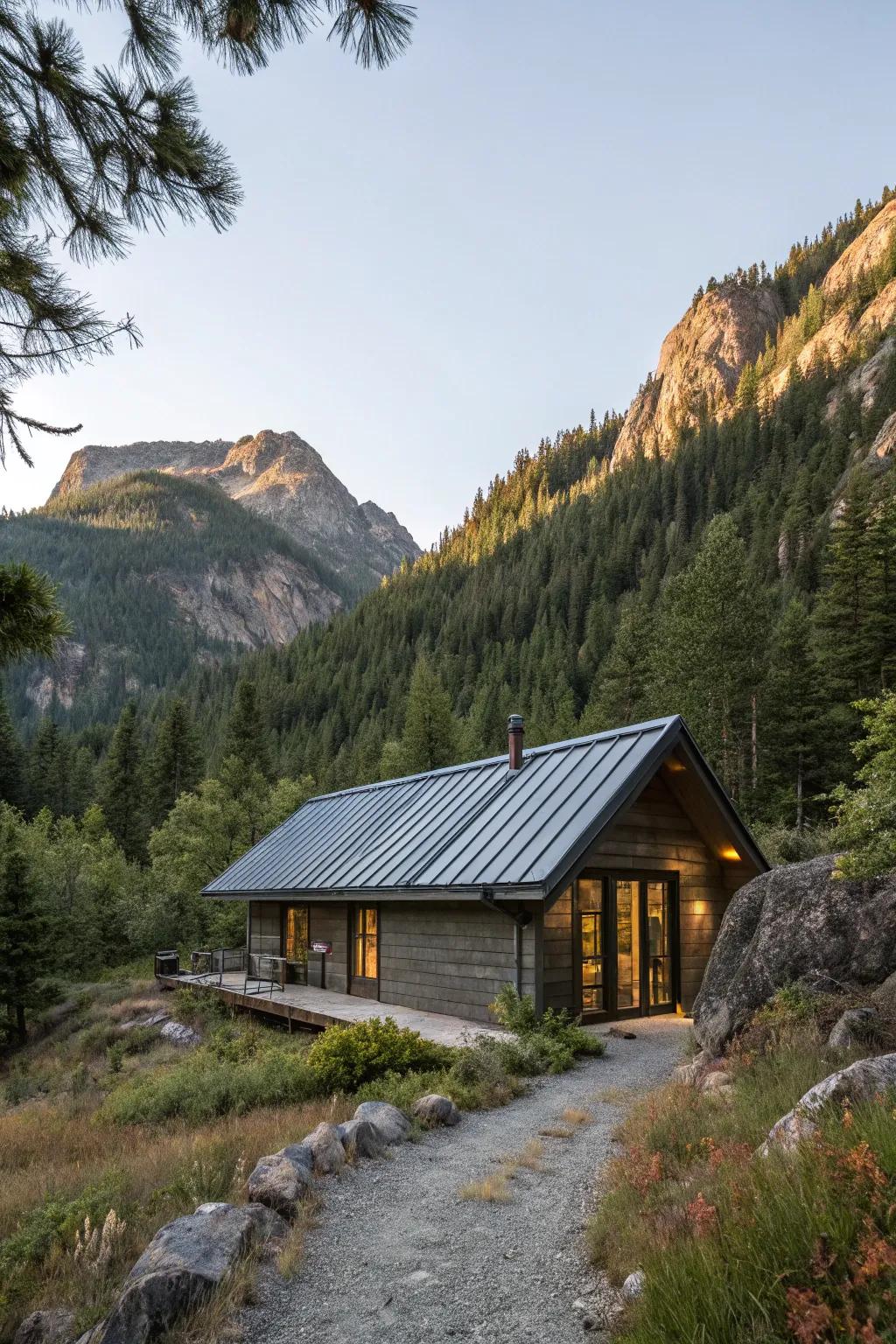
Metal roofs are a top pick for their durability and sleek appearance. They’re perfect if you want a roof that withstands the elements and reduces energy costs.
Give these a look:
- Metal Roofing Panels: Enhance your cabin’s roof with durable panels, designed to withstand all weather conditions.
- Metal Roof Sealing Tape: Ensure a watertight finish with high-quality sealing tape, protecting against leaks.
- Insulation for Metal Roofs: Optimize your energy efficiency and indoor comfort with specialized roof insulation.
12. Combination Roof for Best of Both Worlds
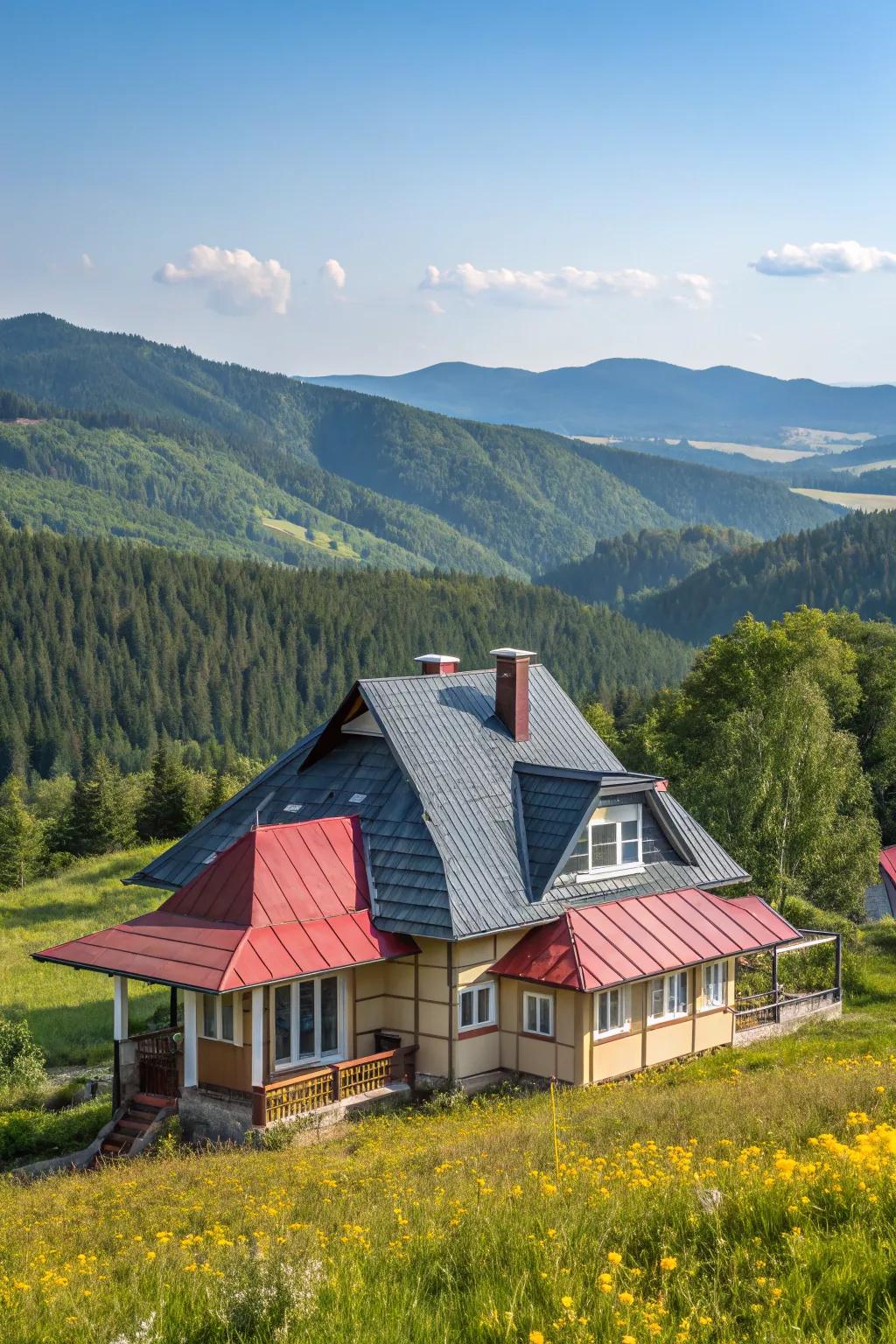
Why settle for one style when you can have a combination roof? Mix and match different designs to create a unique and functional aesthetic.
Explore these options:
- Metal Roofing Panels: Enhance your cabin’s durability and style with versatile metal roofing panels. Perfect for various designs.
- Asphalt Shingles: Add a classic touch and weather resistance with high-quality asphalt shingles. Easy to install.
- Roof Ridge Vents: Improve ventilation in your combination roof with efficient ridge vents for better energy efficiency.
13. Solar Panel Roof
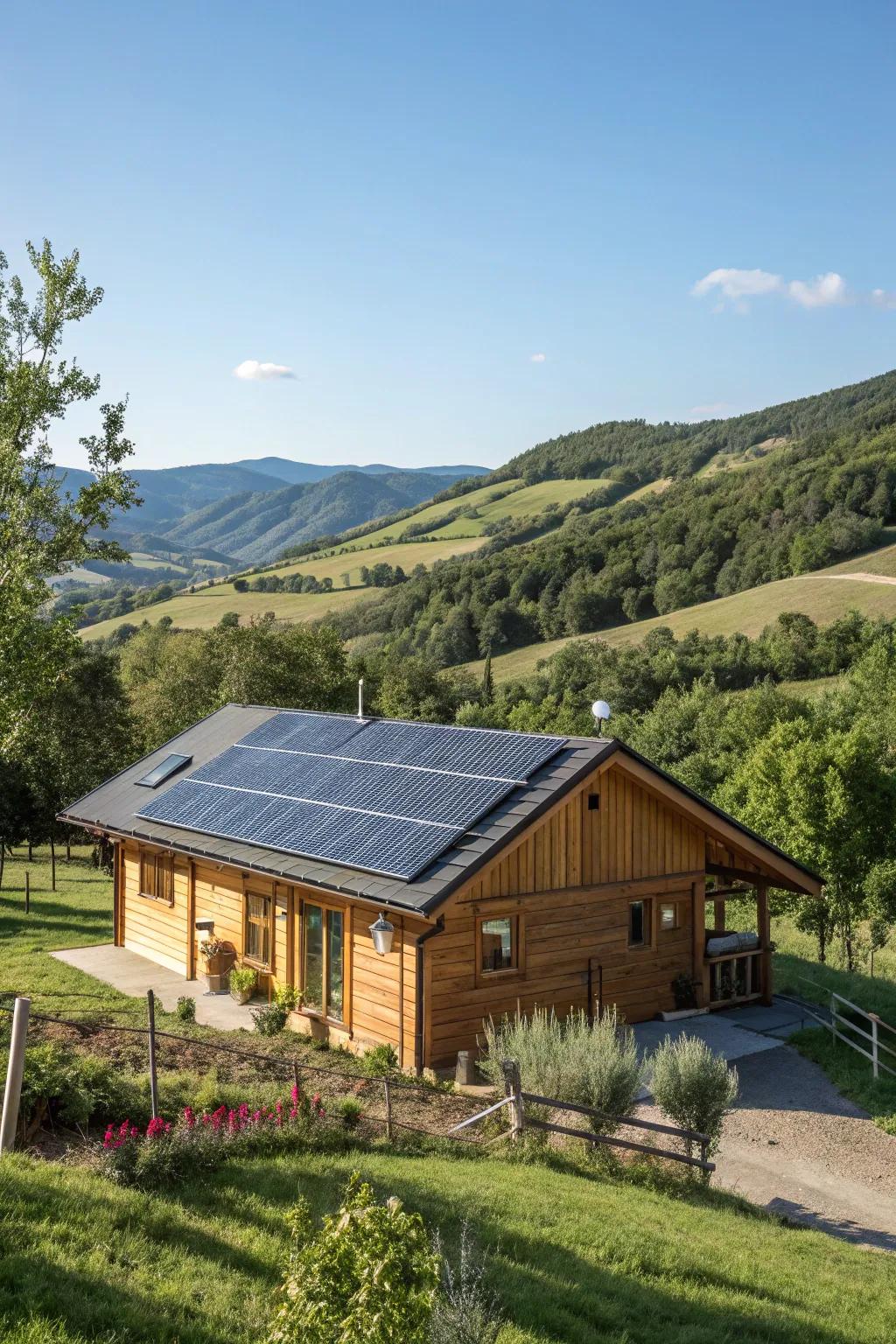
Transform your roof into an energy source with solar panels. They’re not just practical but also a modern statement, showing your commitment to sustainable living.
Check these products out:
- Solar Panel Kit: Maximize energy efficiency on your roof with this easy-to-install solar panel kit today.
- Solar Panel Mounting Brackets: Secure your solar panels with reliable mounting brackets for optimal performance and safety.
- Solar Power Inverter: Convert solar energy efficiently with this durable power inverter designed for modern installations.
14. Mansard Roof for French Flair
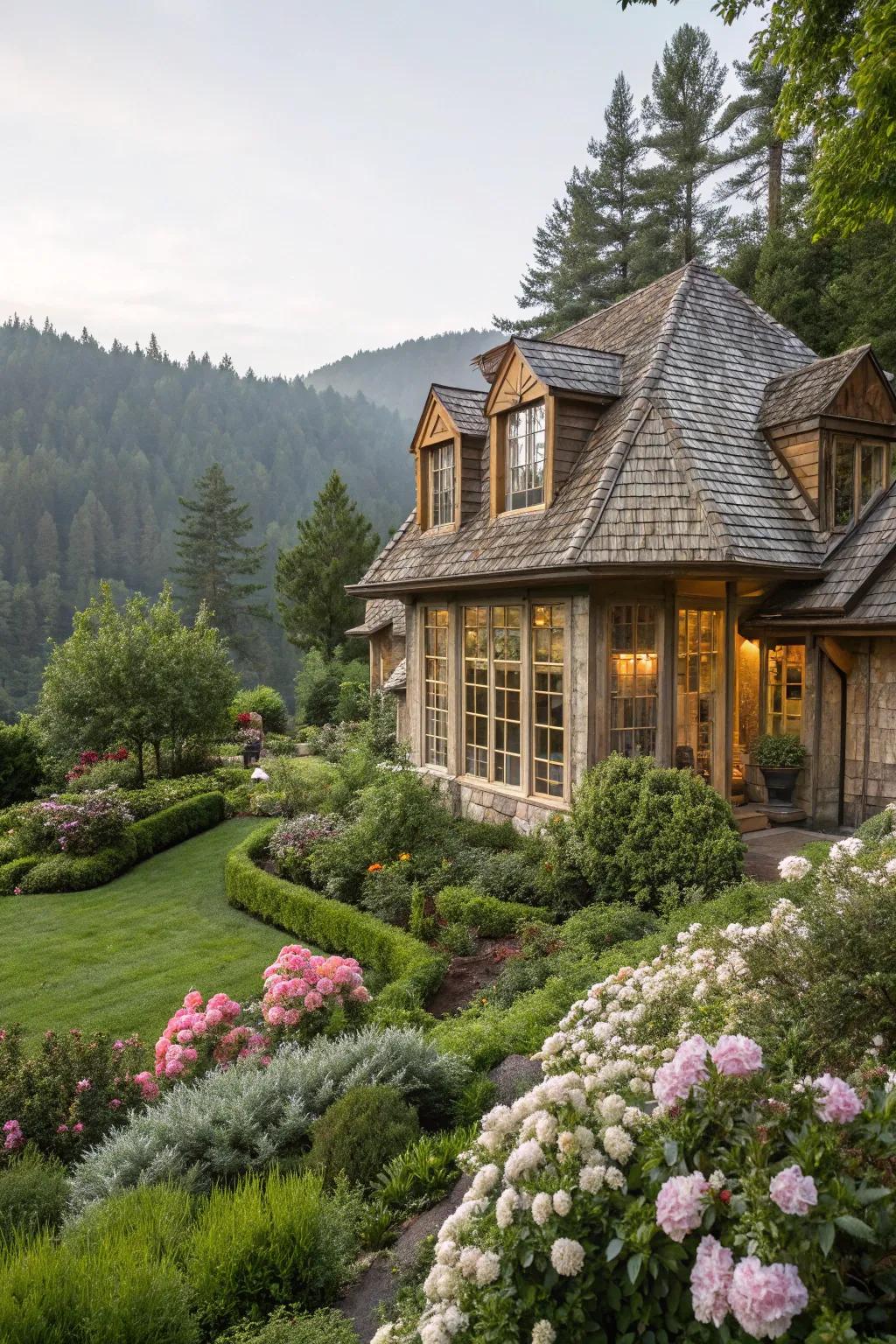
Add a touch of French elegance with a mansard roof, which provides extra living space under its unique double-slope design. Perfect for those who love a bit of luxury.
You might like:
- Decorative Metal Roof Shingles: Elevate your mansard roof with decorative metal shingles for a classic and durable finish.
- Weatherproof French Windows: Install elegant French windows under your mansard roof for charm and energy efficiency.
- High-Quality Roof Insulation: Boost your cabin’s comfort with high-quality roof insulation, perfect for under a mansard roof.
15. Eco-Friendly Green Roof
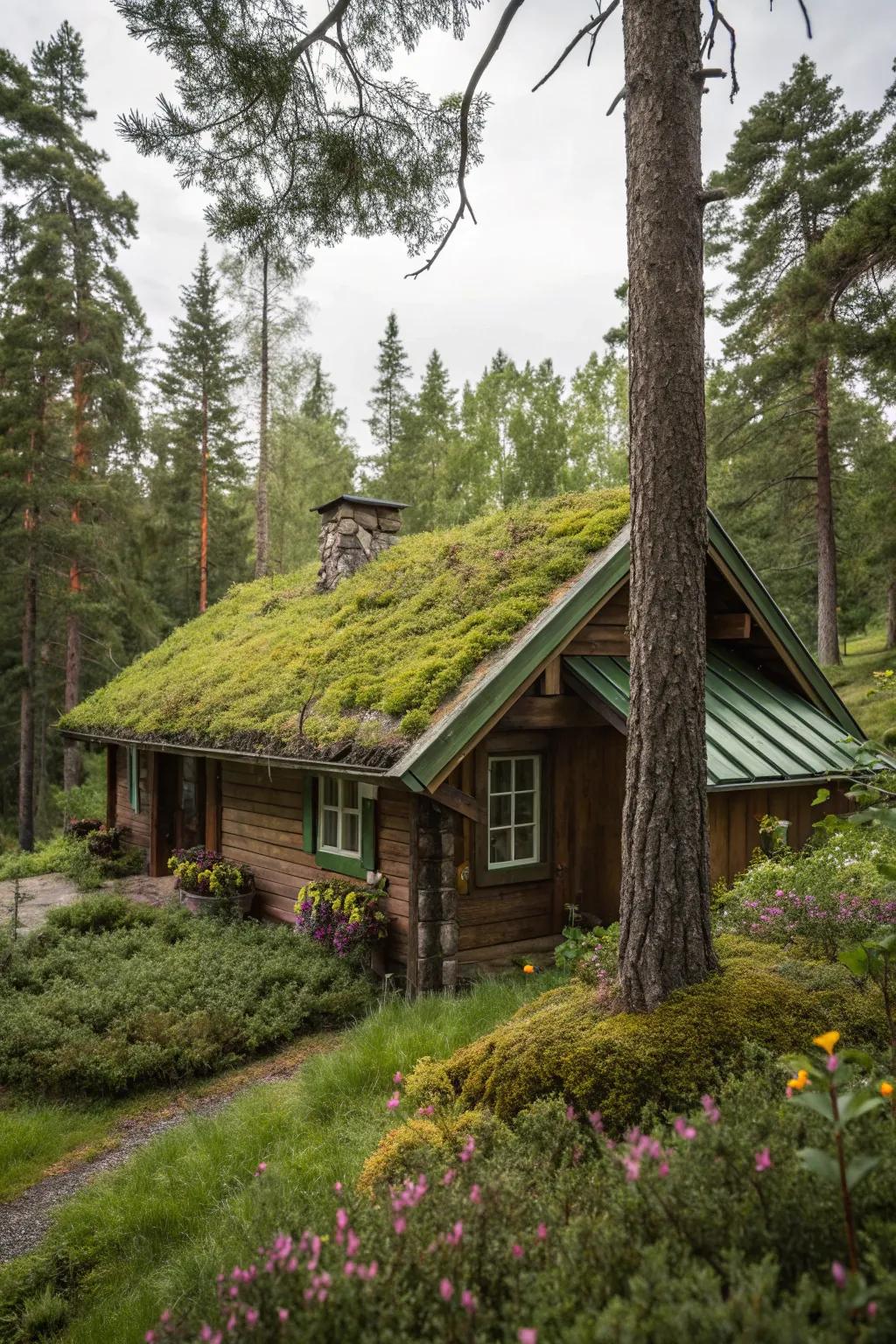
For the eco-conscious, a green roof covered in plants offers insulation benefits and blends beautifully with the natural environment. It’s like having a garden in the sky!
A few helpful options:
- Green Roof Planting Tray: Enhance your green roof with these easy-to-install plant trays. Perfect for a lush, natural look.
- Eco-Friendly Roofing Membrane: Protect your cabin with durable, eco-friendly roofing membranes designed for green roof systems.
- Automatic Drip Irrigation Kit: Keep your rooftop plants hydrated with an efficient drip irrigation system. Easy setup and water-saving.
16. Thatched Roof for Rustic Charm

Nothing says cozy quite like a thatched roof, offering a unique rustic charm. It’s an eye-catching option that also provides excellent insulation.
Possibly helpful picks:
- Natural Thatch Roofing Panels: Transform your cabin with authentic thatched panels. Enhance insulation and rustic charm effortlessly.
- Weatherproof Thatch Roof Coating: Extend your roof’s life with a durable protective coating. Shield against weather elements seamlessly.
- Thatch Roof Repair Kit: Keep your thatched roof pristine. Easy repair solutions for maintaining timeless aesthetic.
17. Charming Gambrel Roof
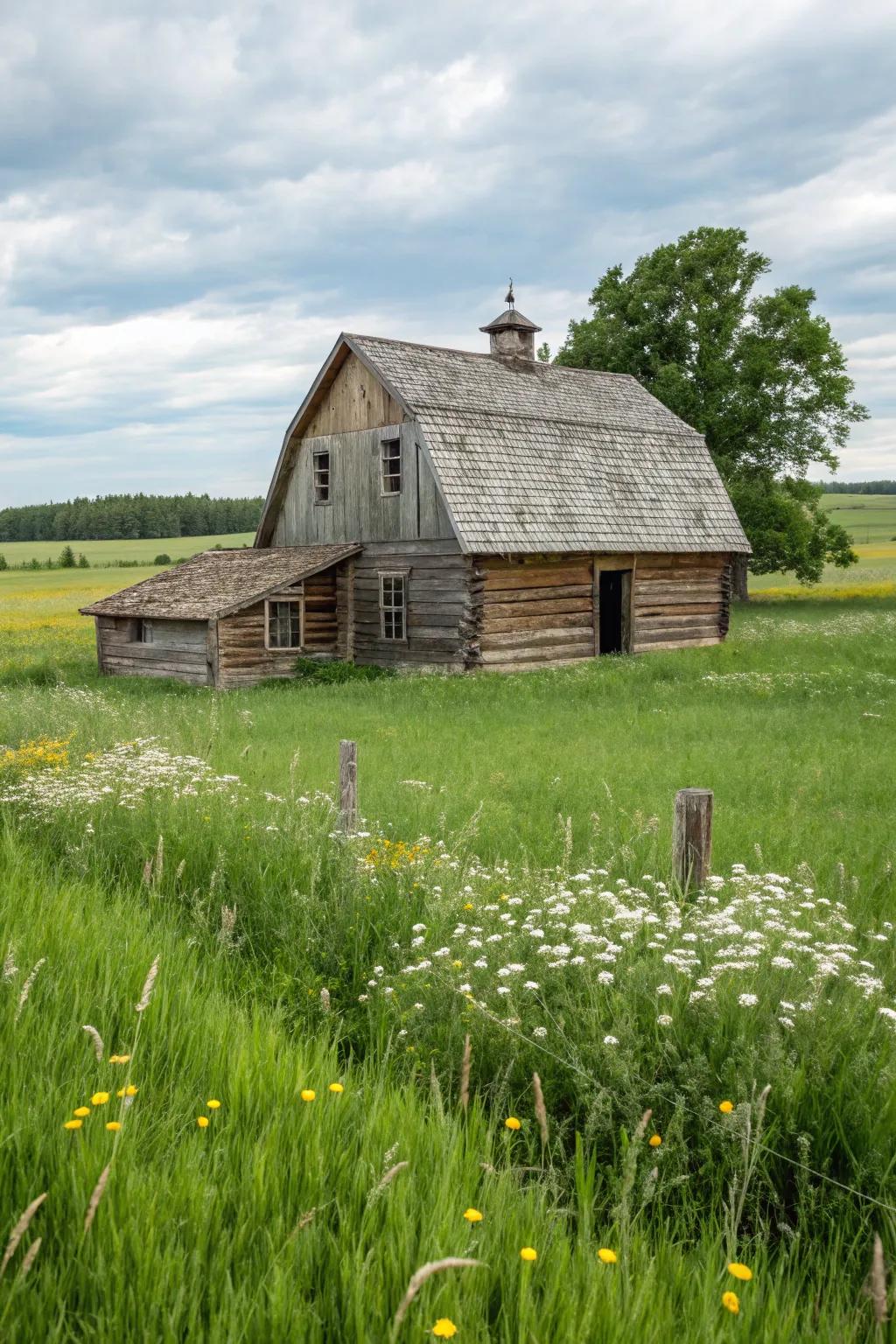
Inspired by classic barn architecture, the gambrel roof offers extra space with its dual slopes. It’s a clever way to maximize attic storage or create a spacious loft.
May just do the trick:
- Roofing Shingles: Enhance your gambrel roof with durable shingles, ensuring long-term protection and classic style.
- Loft Ladder: Easily access your spacious loft with a sturdy loft ladder, designed for safety and convenience.
- Insulation Panels: Upgrade your cabin roof with efficient insulation panels to maintain comfort and save energy.
18. Corrugated Iron Roof for Industrial Edge
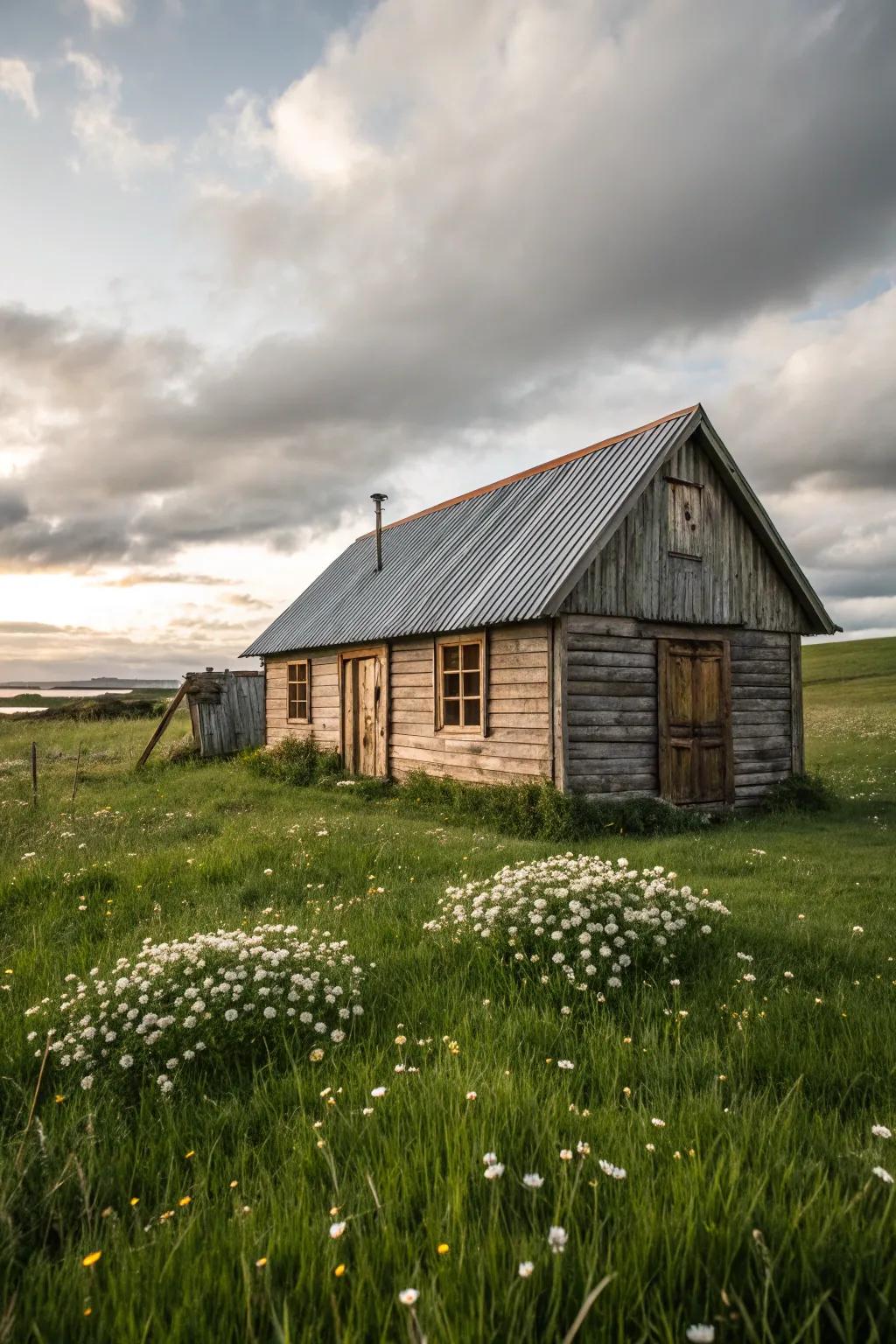
For a touch of industrial flair, corrugated iron roofs are both practical and stylish. They’re sturdy, lightweight, and add a modern edge to any cabin.
These products might be useful:
- Corrugated Metal Roofing Sheets: Transform your cabin with durable, stylish corrugated metal sheets for modern industrial appeal.
- Metal Roof Ridge Caps: Enhance weatherproofing with sturdy metal ridge caps designed for corrugated roofing projects.
- Roofing Screws with Sealing Washers: Secure your corrugated roof with reliable screws and sealing washers for maximum durability.
19. Flat Roof for a Modern Twist
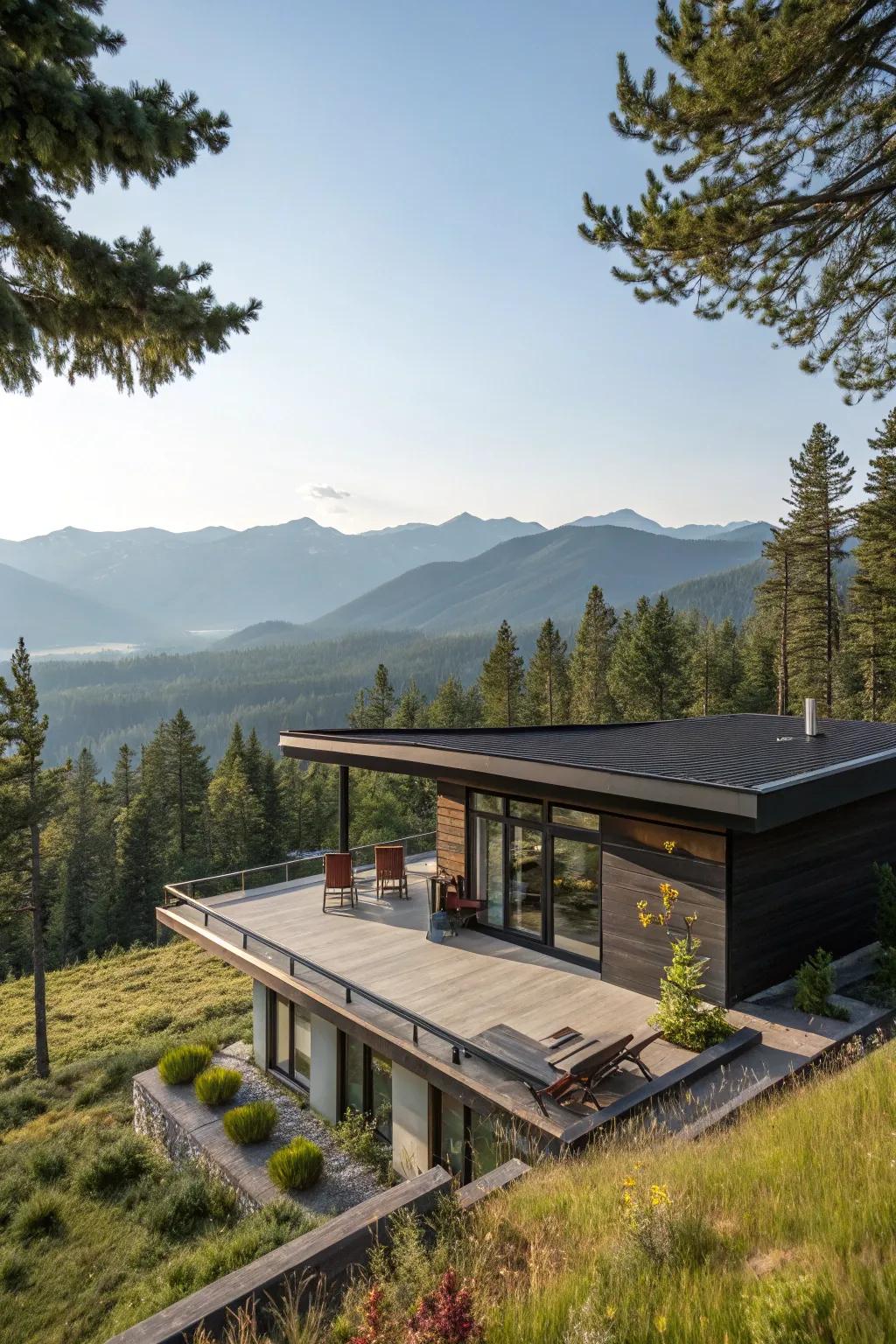
A flat roof offers a modern twist and can be used as a rooftop terrace for soaking up the sun. It’s a bold choice that maximizes usable space.
Try these:
- Rooftop Terrace Lounge Chairs: Relax under the sun in style with comfortable and chic lounge chairs for your rooftop.
- Outdoor Patio Umbrella: Enjoy shade and elegance with a stylish patio umbrella on your modern flat rooftop.
- Solar String Lights: Illuminate your evening gatherings with eco-friendly solar string lights for a magical atmosphere.
